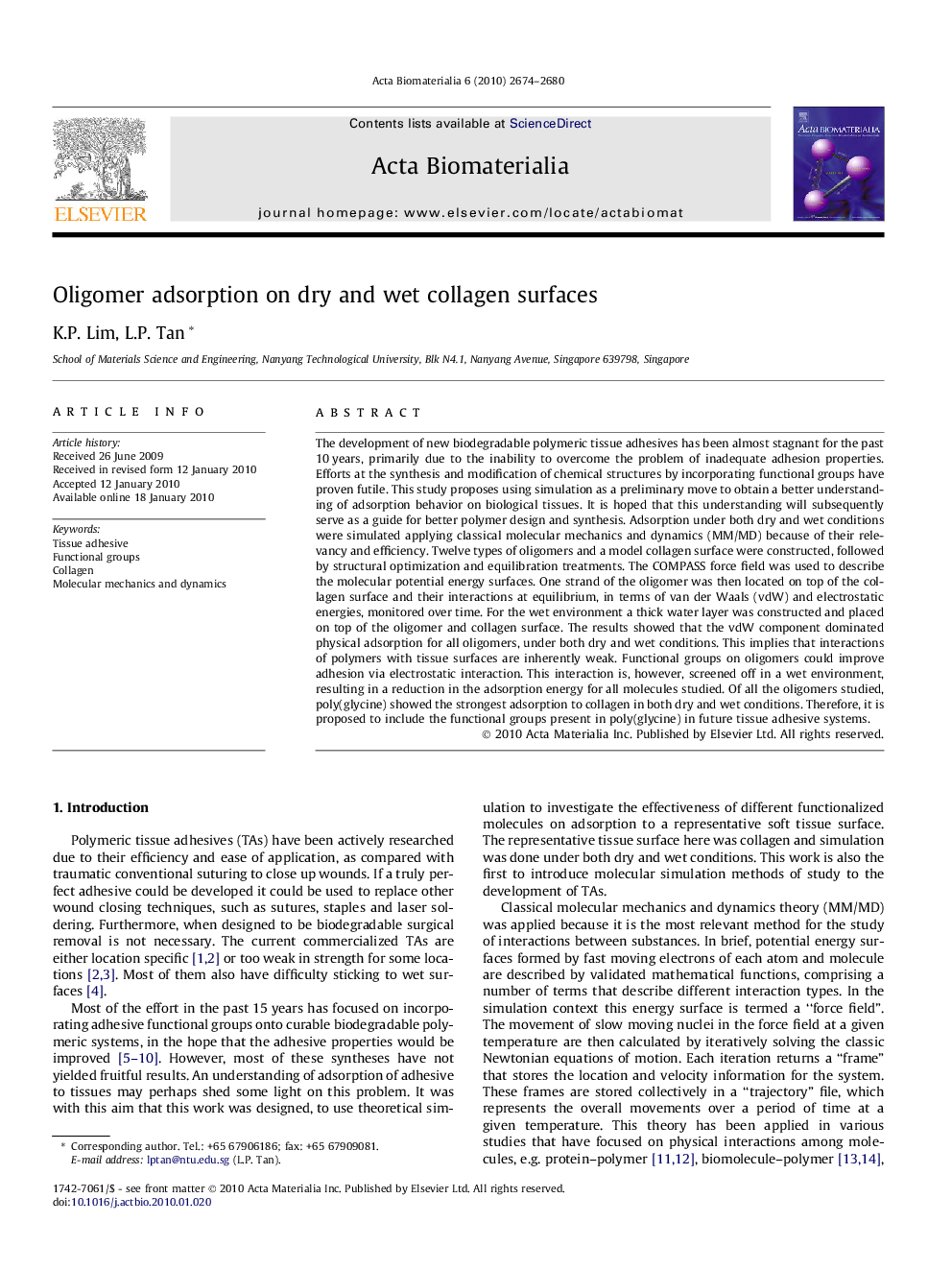| Article ID | Journal | Published Year | Pages | File Type |
|---|---|---|---|---|
| 2445 | Acta Biomaterialia | 2010 | 7 Pages |
The development of new biodegradable polymeric tissue adhesives has been almost stagnant for the past 10 years, primarily due to the inability to overcome the problem of inadequate adhesion properties. Efforts at the synthesis and modification of chemical structures by incorporating functional groups have proven futile. This study proposes using simulation as a preliminary move to obtain a better understanding of adsorption behavior on biological tissues. It is hoped that this understanding will subsequently serve as a guide for better polymer design and synthesis. Adsorption under both dry and wet conditions were simulated applying classical molecular mechanics and dynamics (MM/MD) because of their relevancy and efficiency. Twelve types of oligomers and a model collagen surface were constructed, followed by structural optimization and equilibration treatments. The COMPASS force field was used to describe the molecular potential energy surfaces. One strand of the oligomer was then located on top of the collagen surface and their interactions at equilibrium, in terms of van der Waals (vdW) and electrostatic energies, monitored over time. For the wet environment a thick water layer was constructed and placed on top of the oligomer and collagen surface. The results showed that the vdW component dominated physical adsorption for all oligomers, under both dry and wet conditions. This implies that interactions of polymers with tissue surfaces are inherently weak. Functional groups on oligomers could improve adhesion via electrostatic interaction. This interaction is, however, screened off in a wet environment, resulting in a reduction in the adsorption energy for all molecules studied. Of all the oligomers studied, poly(glycine) showed the strongest adsorption to collagen in both dry and wet conditions. Therefore, it is proposed to include the functional groups present in poly(glycine) in future tissue adhesive systems.
